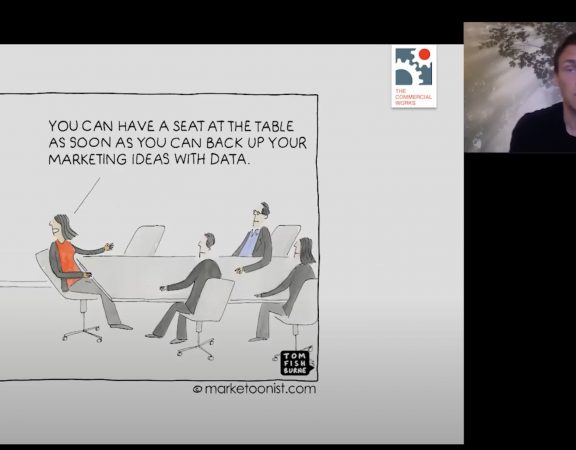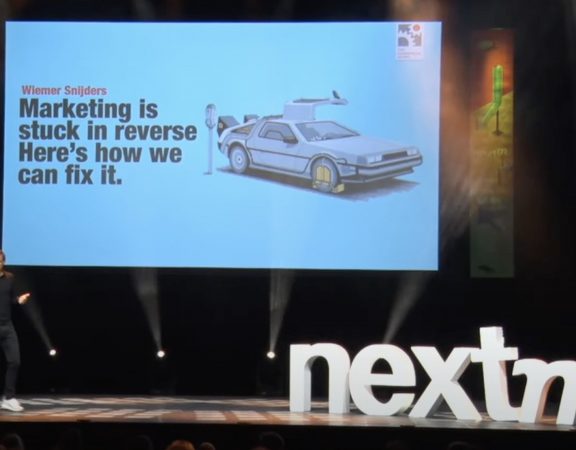Back in the old days, when data was scarce, information was gold. But data sources grew in scale and in and variety, so mere ‘information’ got out of fashion. Roughly since the shift of the millennium, we rather talk about ‘insight’. But ‘insight’ is a generic term with many interpretations. One of these interpretations can be especially misleading: the idea that a piece of research can only provide ‘insight’ when something new and exciting is discovered.
Insight is closer to decision making
Many definitions of ‘insight’ are out there. Just to get a rough idea, I selected some (see Table 1). Usually, you will find a couple of commonalities in these definitions. ‘Insight’ is often viewed as more than mere ‘information’ in the sense that it is (1) put in the business and consumer context so that it (2) facilitates decision making. From a value chain perspective (Figure 1), it makes sense to prefer insight over information: insight is a step closer to decision making. So far, so good.
Many definitions, however, also include (3) a level of ‘inspiration’, ‘surprise’ or ‘newness’. It is this part that causes trouble. When learning about consumers requires a ‘discovery’, we forget why we are collecting data in the first place: to learn how consumer behaviour works. Who buys what, when and why. You can’t expect this to lead to new discoveries all the time.
Table 1: Some definitions of customer insight
Figure 1: Customer insight value chain (Source: Rodenberg, 2004, adapted)
Two takes on customer insight
In this light, I find the distinction between two different takes on ‘customer insight’ made by insight experts Steve Wills and Pauline Williams very useful. First, there are ‘insights’ (plural). They define it as “those flashes of inspiration or penetrating discoveries that can lead to specific opportunities”. Second, there is ‘Insight’ (singular). They define it as “having a deep, embedded knowledge about the customers and the market around us that helps structure thinking and sound decision making”.
It is the former (‘insights’, plural) that marketing researchers are often expected to deliver, while it is the latter (‘Insight’, singular) that is the most valuable. The ‘discovery’ take on insights could be relevant in some situations such as new product innovation. But in most situations, it is the ‘embedded knowledge’ take on insights that will improve the decision-making process. Above, it is the latter that takes the bigger picture into account, essential in any decision-making context.
Blowing up results
Consider the following, very common types of research:
- Market structure
- Segmentation
- Concept & ad testing
- Usage & attitudes
- Customer Satisfaction & NPS
- Customer journey mapping
The list is obviously incomplete, but the point is: these common types of research seldom lead to exciting discoveries. And there is nothing wrong with that. If executed well, these will all contribute to ‘Insight’, the ‘deep, embedded knowledge about the customers and the market around us’.
Too much pressure on making new and exciting discoveries leads to the inevitable blowing up mildly interesting results into something more spectacular. This is probably one of the reasons I often see indexed numbers instead of absolute results in quantitative reports: indexed numbers are relative, so differences look sharper. Something utterly trivial is tricked into something salient and might even be promoted to an ‘insight’.
An inconvenient truth
Related is that marketing researchers tend to discard ‘don’t know’ (or ‘don’t care’) as a valid answer. Often it is not even an option to choose from in surveys, and if it is, it is rather left out than interpreted for what it is, i.e.: most people do not have much thoughts about or feelings for your brand or product. Now that’s what I call an Insight (capital I, singular). For many an inconvenient one, but relevant in many commercial decision-making contexts.
I could have told you that!
In practice, research that doesn’t provide anything new, exciting, or unexpected, is often deemed worthless. Your colleagues might say things like ‘I could have told you that without spending all that time and money!’, or: ‘So, everything together we didn’t learn anything we didn’t already know, did we?’.
But most research we do to improve processes and products, put the numbers behind assumptions and at the end of the day, facilitate decision making. Discovering something new along the way should be considered a bonus. If you do find something surprising or new with every piece of research, it’s quite likely that you didn’t know much about your customers in the first place…
References:
Rodenberg, J. (2007). Competitive Intelligence and Senior Management: “The Best Solution to where to Place the Office of Competitive Intelligence is on a Par with Functions that Report Directly to the Board”. Delft, Netherlands, Eburon Academic Publishers.
Wills, S. & Williams, P. (2004). Insight As A Strategic Asset The Opportunity And The Stark Reality International Journal of Market Research, Vol. 46, No. 4.
Insight definitions Table 1:
1: http://consumerig.com/what-are-customer-insights/
3: various, a.o.: https://en.wikipedia.org/wiki/Customer_insight
4: https://thrivethinking.com/2016/03/28/what-is-insight-definition/
5: Renkema, R. & Zwikker, C. (2003). Development of a New Brand Concept. Means-end approach to consumer insight. Paper presented at the ESOMAR Consumer Insights conference in Madrid, April 2003.





